- Home
- Keith Douglass
Armageddon Mode c-3
Armageddon Mode c-3 Read online
Armageddon Mode
( Carrier - 3 )
Keith Douglass
In a daring move, India declares war on Pakistan and launches a first strike against the unsuspecting country. When an American warship is accidentally torpedoed in the ensuing melee, it falls to Carrier Battle Group 14 to make the difference between armistice and Armageddon.
Keith Douglass
Armageddon Mode
PROLOGUE
0735 hours, 23 March
IAF Fulcrum 401, nearing Hyderabad, Pakistan
Lieutenant Colonel Munir Ramadutta peered through his canopy, watching tan desert sand and gravel blur past a hundred meters below. Power surged against his spine through his ejection seat, the muted thunder of twin Tumansky R-33D turbofans, and the morning sun flashed brilliant from his wingtips. He grinned behind his oxygen mask and helmet visor as a verse from the Ramayana came to mind: ” … golden in its shape and radiance, fleet as Indra’s heavenly steed.”
The ancient Hindu epic’s description of Prince Ravanna’s celestial car could easily have applied to his own aircraft. The Mig-29, code named “Fulcrum” by NATO, was almost identical in size, looks, and performance to the American F/A-18 Hornet and was considered by most observers to be more than a match for any fighter interceptor in the world. The Indian fighter was brand-new, fresh from the production lines at Nasik.
Forty-five Fulcrums had been purchased directly from the Soviets, and another one hundred fifty were in licensed production now, sleek and deadly weapons certain to give the Indian air force crushing aerial superiority over India’s old foes.
Pakistan. The barren, dun-colored desert was giving way to the patchwork green of the river-laced Indus Valley. There was still no sign that Wind Strike had been spotted by the Pakistani defenses. They were coming in hard and low on the deck, avoiding radar sites and villages. Even the date — Pakistan Day, anniversary of the 1940 decision to separate from India — had been chosen as a time when Pakistan’s defenses would be at less than one hundred percent. Operation Paschim Hawa — West Wind — had been carefully planned, and the planning was paying off. They were now one hundred fifty kilometers inside the Radcliffe Line, the border between India and Pakistan. Hyderabad, second-largest city in the Sindh, lay one hundred twenty kilometers ahead.
“Green Wind One, this is Green Wind Three,” a voice said in Ramadutta’s headset. “Something on the threat indicator. Might be an APG-66.”
Ramadutta’s grin broadened. A signal from an APG-66 pulse-doppler radar almost certainly meant F-16s. Two of Pakistan’s eleven air defense squadrons were outfitted with F-16 Falcons purchased from the Americans.
The Fulcrum’s abilities as an air superiority fighter were about to be put to the test.
“Roger Three,” Ramadutta answered. “I have it.” His HUD was showing targets now, two of them, fifty kilometers ahead and closing. They were probably part of an air patrol out of the military air base at Kotri.
“Full power now!”
He pushed his throttles forward, and the Fulcrum’s thunder escalated to an avalanche of noise and power. There was a moment’s rattling vibration as he pressed toward Mach 1, then the sudden, silk-smooth transition to supersonic flight. At low altitude, the Fulcrum could manage Mach 1.2, faster by twenty percent than either the Hornet or the Falcon.
Three more Fulcrums paced Ramadutta’s Mig, hurtling westward in tight formation. Behind them, another four Fulcrums escorted the squadron of ground-attack Mig-27 “Flogger-Ds.” When Wind Strike completed its mission over Hyderabad, Pakistani air power in the Sindh would have all but ceased to exist.
“No reaction from the targets,” Green Wind Three reported. “Is it possible they have still not seen us?”
“It is possible,” Ramadutta said. “This close to the ground, our radar returns may be lost in ground clutter.” The Indian air force planes had been operating under strict radar silence to avoid alerting Pakistani receivers. Radio silence was less critical, so near the Indian border and the vast armada of IAF planes preparing the way for West Wind.
“Range thirty kilometers.”
“Pakistan air defense is going on alert,” another voice warned. “I think they have us.”
“It doesn’t matter now,” Ramadutta said. “They still won’t be sure whether or not we’re IAF or Pakistani. Active radar!” Information was more important now than stealth.
His Fulcrum’s powerful pulse-doppler radar painted the sky ahead, pinpointing the two targets.
“Arm weapons!”
His Fulcrum carried R-23 and R-60 missiles, the AA-7 and AA-8 air-to-air killers designated “Apex” and “Aphid” by NATO. For this attack, they would stick to infrared targeting as long as possible, the better to keep the Pakistanis in the dark. He selected an Apex for his first launch. With a range of over thirty-three kilometers, it already had the targets within range. He kept his eyes on the paired blips on his radar screen. The range was down to twenty-four kilometers, still closing. A warbling tone sounded in his ear, his missile informing him that he had a solid IR lock.
“I have lock,” Three reported. Wind Two and Four would hold back, in reserve. “Northern target.”
“Targets breaking off,” Ramadutta snapped. “Launch!”
His thumb caressed the trigger on the Fulcrum’s stick, and he felt the bump as the AA-7 cleared the launch rail and arrowed toward the target on the end of a streaming plume of white smoke. The F-16s were veering sharply toward the south. Whether they’d identified the intruders somehow or were simply changing course for the next leg of their patrol was immaterial now. At better than Mach 1, the Apex homers would reach the targets in a little more than a minute.
The dazzling blue of a canal exploded beneath Ramadutta’s Mig. He glimpsed blurred details on the ground that might have been grazing cattle. The thought struck him with unexpected force. Such a peaceful scene … and the war has already begun.
War! Somehow, Munir Ramadutta had given little thought to the reality of that word. He’d thought his training — and the long expectation of war’s coming — would have braced him for this moment. They had not.
Since Pakistan had separated from India in 1947, there had been four major wars between the countries and almost continuous sniping and artillery duels in the barren and ruggedly mountainous districts of Jammu and Kashmir in the far north. The most serious clash had been in 1971, when a Pakistani attack led to the Indian conquest of East Pakistan and the subsequent creation of a new nation, Bangladesh.
The 1971 war had proved that India was now the preeminent military power of the region, with an air force, navy, and army that dwarfed anything Pakistan could bring against her. But still, Pakistan had continued the skirmishing and the border incidents, railing against India for her silence during the Soviet invasion of Afghanistan, steadfast in her refusal to allow the Moslem separatist movements of the Kashmir to settle their long-standing dispute with New Delhi. Lately, Pakistan’s jingoistic tirades had taken on a new and ominous tone; of all the Islamic nations of the world, Pakistan was perhaps the most technically advanced … and the closest to the development of a working nuclear device.
India already had the bomb, of course, but that was scant comfort when facing a nation of ninety million Moslem fanatics. Kashmir was the flash-point for this war … and the war’s excuse, but the New Delhi government had already decided to settle things now, before India’s troublesome western neighbor became too dangerous to deal with, before the anti-Indian rioting and violence in the Sindh, the Pakistani agitation and terrorism in the north went out of control.
Operation West Wind would end the Pakistani threat once and for all.
He picked out the tracings of the AA-7s on his radar scre
en. The gap between targets and missiles narrowed … Far ahead, through the transparency of his canopy, he glimpsed a telltale flash, and the northernmost blip on the screen seemed to expand, then broke into pieces. “Hit!” Green Wind Three exalted.
“Kill!”
A moment later, Ramadutta’s missile merged with the southern target. A second tiny flash announced the explosion of a forty-kilogram warhead.
He lost the blip when it merged with the ground return.
“Two kills!” Wind Three called over the radio. “Our first two kills of the day!”
“There will be more, my friend,” Ramadutta reminded him. “We have aircraft airborne now over Kotri. Range … fifty kilometers.”
“This is Red Wind Leader,” a new voice said. Red Wind was the Mig-27 squadron. Their first target was the air base at Kotri. Their second was a munitions factory north of Hyderabad. “Breaking off for target run.”
“Roger,” Ramadutta replied. He was surprised at how easily the words came. “Good hunting.”
The Pakistanis were rising now like hornets from a nest prodded by a small boy’s stick. It didn’t matter. Their destroyers were upon them.
Fleet as Indra’s heavenly steed … As the silver arrowhead shapes of Pakistani Falcons and IAF Migs clashed, swirled, and loosed their deadly payloads, Ramadutta thought briefly of the Americans. They had been much in the news of late, with their aircraft carrier battle group in the Arabian Sea off the west coast of India. The Americans had been trying to interfere with Indian interests in Kashmir, or so the news reports had claimed, and there were rumors that the Americans had threatened to attack India if their Pakistani allies were invaded.
At close quarters now, Ramadutta pulled back on his stick, following a Pakistani Falcon in a steep-climbing roll into the cloudless skies above Hyderabad. An AA-8 leaped from his wing, curving to meet the enemy interceptor in a white flash and a shower of debris.
If the Americans decided to go to war in defense of their Islamic friends, so much the worse for them. Ramadutta had no illusions about American military might … but he had no illusions either about the problems of fighting a war halfway around the world. India could deploy over nine hundred combat aircraft. The Indian navy boasted two aircraft carriers, purchased from Great Britain along with a number of Sea Harriers. It seemed unlikely that the Americans would risk intervening in a war so far from their own borders.
And if they did, that carrier battle group now lying over the horizon to the south would be a tempting target. A nuclear supercarrier, the U.S.S. Thomas Jefferson … now she would be a worthy target for some eager Indian pilot!
Lieutenant Colonel Ramadutta watched the Pakistani Falcon burn as it tumbled toward the blue waters of the Indus River far below.
CHAPTER 1
0945 hours, 23 March
Tomcat 201
Lieutenant Commander Matt Magruder, running name “Tombstone,” eased the throttles back on his F-14D Tomcat and put the aircraft into a gentle, twelve-degree port turn. Sunlight glared off the surface of the water thirty thousand feet below, a dazzling blaze of white light mirroring the tropical sun above the vast emptiness of the Indian Ocean. The sky overhead was as huge and as empty as the sea, a piercing blue impossible to describe to anyone who’d not seen it from the vantage point of an interceptor’s cockpit.
To starboard, a second F-14 hung suspended between sea and sky, its modex number 216 visible on its nose just ahead of the cockpit and the American star-and-bar insignia. Lieutenant Commander Edward Everett Wayne, “Batman” to his squadron mates, was Tombstone’s wingman for this patrol.
“Viper Two, Viper Leader,” Tombstone called over his radio, using the tactical frequency. “What do you say, Batman? Let’s tank up.”
“Roger that, Stoney,” Batman’s voice replied. “It’s going to be a long, dry morning.”
The two Tomcats had been catapulted from the deck of the U.S.S. Jefferson only minutes before. Their operational plan called for them to top off their tanks from a KA-6D, then assume BARCAP — BARRIER Combat Air Patrol — between the ships of the carrier battle group and the unseen coastline a little more than five hundred miles to the north. They would be airborne for about four hours.
Bringing the stick back to center, Tombstone switched channels and spoke into the helmet mike once more. “Homeplate, Homeplate, this is Viper Leader,” he said. “Do you copy, over?”
“Viper Leader, Homeplate,” a voice replied in his helmet phones. “Go ahead.”
“Homeplate, we’re on station Bravo Sierra four-niner at angels three-oh.
We could use a drink right about now. Whatcha got in the way of a Texaco, over?”
“Viper Leader, Homeplate. Come to heading two-seven-four at angels two-seven. We’ve got some guys up there with a six-pack waiting for you. Call sign Tango X-Ray One-one.”
“Roger that, Homeplate.” He dropped the Tomcat into a new turn, Batman’s F-14 pacing him a hundred feet off his starboard wing. “Viper now coming to two-seven-four.”
“Ah, Homeplate,” Tombstone’s Radar Intercept Officer added. “I have a single contact bearing two-seven-four at fifteen miles. Confirm that’s our target, over.”
“Roger. That’s your Texaco, boys. No other traffic. Have a cool one on us.” The voice from Jefferson’s Carrier Air Traffic Control Center sounded calm, almost bored. CATCC — the acronym was universally pronounced “cat-sea”—was tasked with keeping track of everything going on in the skies around the supercarrier beyond the radius commanded by Pri-Fly and the Air Boss.
The way things were going now, Tombstone thought, that job could quickly become more important than ever. That morning’s situational briefing had not been encouraging.
“Affirmative, Homeplate. Viper out.” Tombstone switched his mike to the Tomcat’s intercom system. “Well, CAG? How’s it feel to strap on an airplane again?”
“Pretty good, Tombstone,” Commander Stephen Marusko replied over the ICS from the back seat. “I thought I was going to forget what it was like.”
Marusko was the officer in charge of Jefferson’s air wing, CVW-20, over ninety aircraft and three thousand men. His title of CAG was a holdover from the days when it stood for Commander Air Group. Recent changes in the way the Navy ran things had emphasized the administrative part of the job at the expense of flying. Nowadays, a CAG started off as an aviator, like Tombstone, in command of a carrier fighter squadron, then was rotated stateside for a tour in Washington, becoming, as Marusko put it, a prime, Grade-A desk jockey. After that he went back to sea as a carrier’s CAG.
Administrative duties or not, he was still expected to fly with his men, but the press of work — paperwork for the most part — always seemed to get in the way. Tombstone’s usual RIO, a young j.g. named Jerry Dixon, had been given a medical downcheck the day before, and Tombstone had offered CAG a ride as backseater at morning briefing. Marusko had been almost embarrassingly eager for the chance. Contrary to popular belief, Navy RIOS were neither permanently assigned to a specific aviator, nor were they “failed pilots.” Experienced aviators took the back seat of Navy Tomcats from time to time to log out some flight time, or simply to keep their hand in running the F-14’s complex radar and communications systems.
But it might not be much longer before airborne CAGS were a thing of the past. The Navy was experimenting with a new way of running things, introducing the “Supercag” concept that would make CAG a captain’s billet and let him share responsibilities with the carrier’s skipper.
And won’t that be fun, Tombstone thought with an ironic grin beneath his oxygen mask. The poor bastard might never get to fly anything but his desk.
All of this had set Tombstone to thinking. He was the CO of the Tomcat squadron designated VF-95, socially known as the Vipers. Almost thirty years old, Tombstone had lived for carrier aviation since the day he’d shown up for flight training at Pensacola. Before long he’d be up for promotion to commander, and that Stateside billet on his way to a
CAG slot of his own. All along, he’d been moving up the Navy career ladder, the goal of CAG clearly in sight. And after that … well, to be skipper of an aircraft carrier, you had to have served a stretch as CAG.
There were only fifteen carrier command billets in the whole U.S. Navy and openings were rare, but Tombstone had never really entertained doubts that he would make it … some day.
But the doubts were with him now. Not whether he would make it, but whether he should even try. He had some tough decisions coming up.
“Viper Leader, Viper Two,” Batman said over the tactical frequency.
“Tally-ho! Tanker ahoy at twelve o’clock low.”
“I see him,” Marusko said.
Tombstone glanced up from his controls and caught the flash of sun glint off an aircraft canopy far ahead. “Got him, Batman. We’ll take first crack. Breaking left.”
“Copy, Leader.”
Tombstone slid the F-14 into a left-hand barrel roll while CAG was still speaking, going inverted and following his starboard wing over in a long, sideways fall that bottomed out at 27,000 feet. Ahead, the KA-6D tanker plowed toward the horizon at a steady 250 knots.
“Tango X-ray One-one,” he called. “Viper Two-oh-one. Coming in for some of your basic I&I.”
“Affirmative, Two-oh-one. Come on in. We’re sweet, hot, and willing.”
I&I, intercourse and intoxication, was the Navy man’s reworking of the more traditional R&R. Much of the slang and banter associated with air-to-air refueling carried a strongly sexual content, for obvious reasons. Sweet meant they had fuel.
The KA-6D was a conventional A-6 Intruder converted into a fuel tanker, a “Texaco” in Navy jargon. With 500-gallon drop tanks slung beneath wings and fuselage plus what was carried on board, it could transfer up to 21,000 pounds of fuel — over 3,200 gallons — to other aircraft. As Tombstone approached the tanker from the rear, the tanker extended a fifty-foot boom from its belly, a slender hose tipped by a basket that resembled an iron mesh shuttlecock.

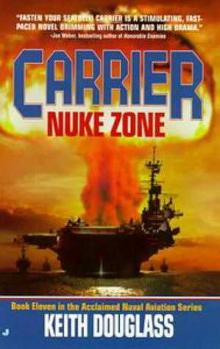 Nuke Zone c-11
Nuke Zone c-11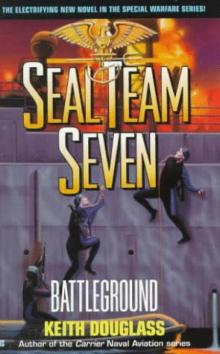 Seal Team Seven 6 - Battleground
Seal Team Seven 6 - Battleground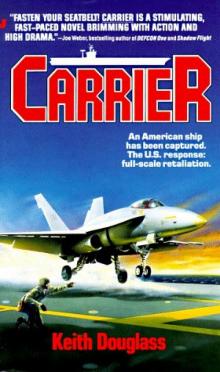 Carrier c-1
Carrier c-1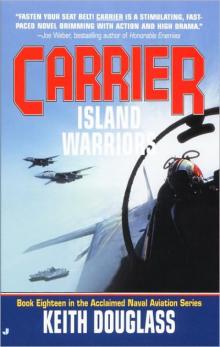 Island Warriors c-18
Island Warriors c-18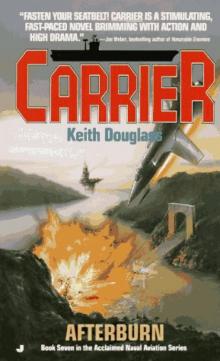 Afterburn c-7
Afterburn c-7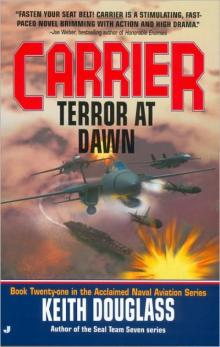 Terror At Dawn c-21
Terror At Dawn c-21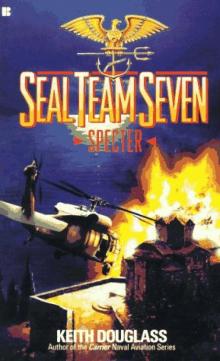 Specter sts-2
Specter sts-2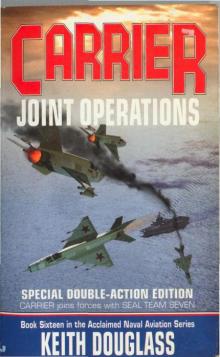 Joint Operations c-16
Joint Operations c-16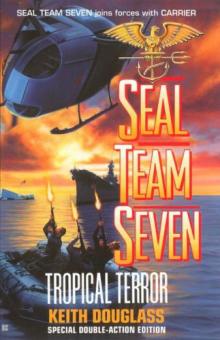 Tropical Terror sts-12
Tropical Terror sts-12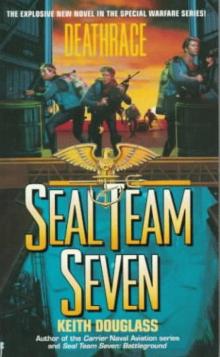 Seal Team Seven 7 - Deathrace
Seal Team Seven 7 - Deathrace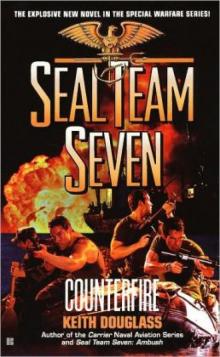 Counterfire sts-16
Counterfire sts-16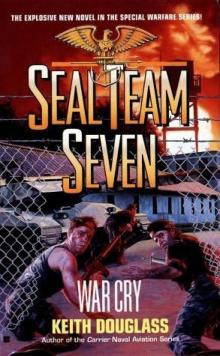 War Cry sts-9
War Cry sts-9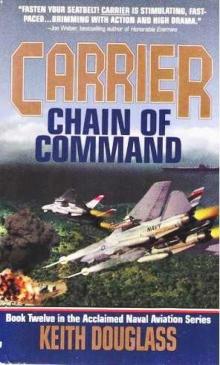 Chain of Command c-12
Chain of Command c-12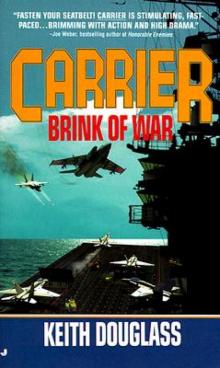 Brink of War c-13
Brink of War c-13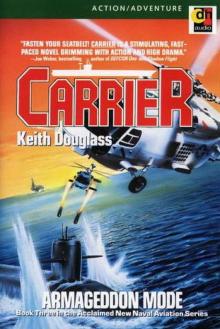 Armageddon Mode c-3
Armageddon Mode c-3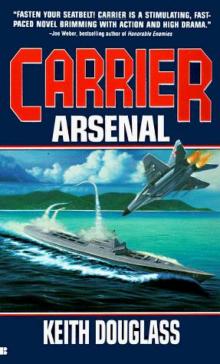 Arsenal c-10
Arsenal c-10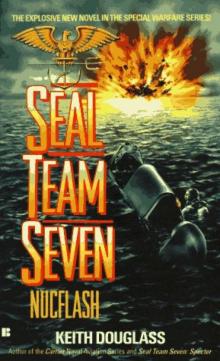 Nucflash sts-3
Nucflash sts-3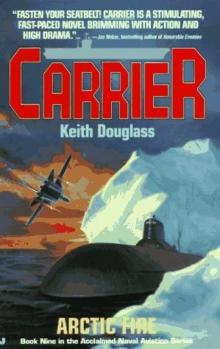 Arctic Fire c-9
Arctic Fire c-9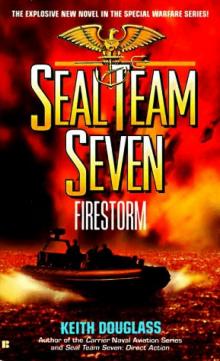 Firestorm sts-5
Firestorm sts-5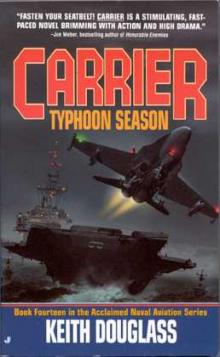 Typhoon Season c-14
Typhoon Season c-14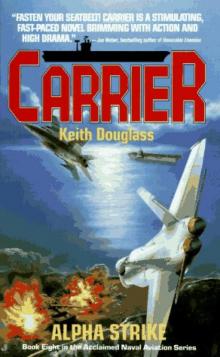 Alpha Strike c-8
Alpha Strike c-8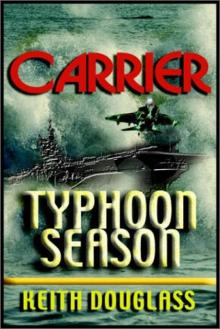 Carrier 14 - TYPHOON SEASON
Carrier 14 - TYPHOON SEASON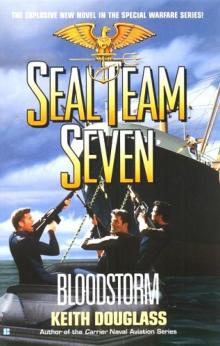 Bloodstorm sts-13
Bloodstorm sts-13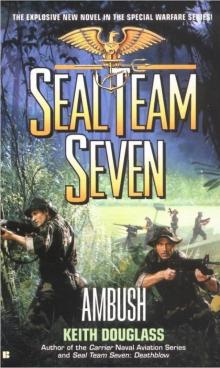 Ambush sts-15
Ambush sts-15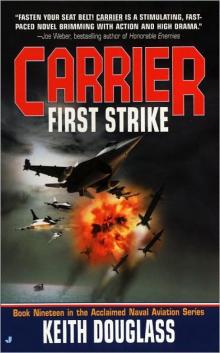 First Strike c-19
First Strike c-19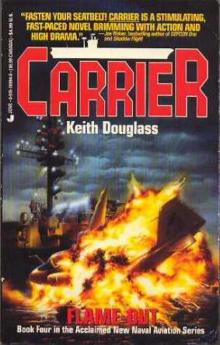 Flame Out c-4
Flame Out c-4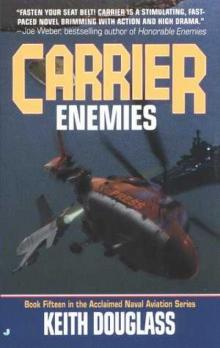 Enemies c-15
Enemies c-15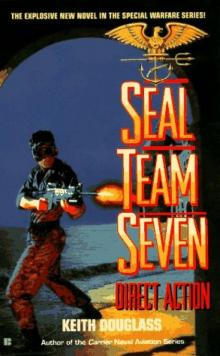 Seal Team Seven 04 - Direct Action
Seal Team Seven 04 - Direct Action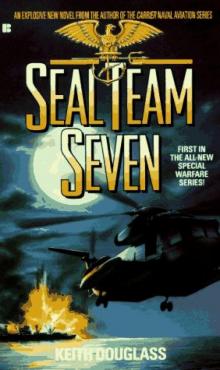 Seal Team Seven 01 - Seal Team Seven
Seal Team Seven 01 - Seal Team Seven Payback sts-17
Payback sts-17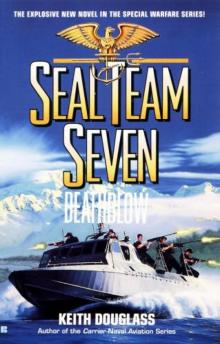 Death Blow sts-14
Death Blow sts-14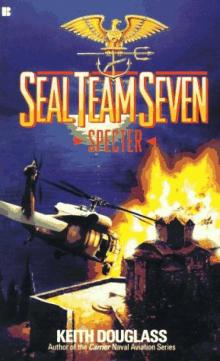 Seal Team Seven 02 - Spector
Seal Team Seven 02 - Spector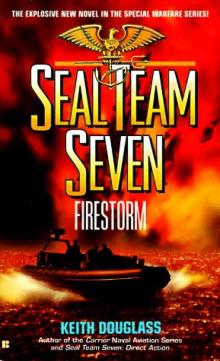 Seal Team Seven 5 - Firestorm
Seal Team Seven 5 - Firestorm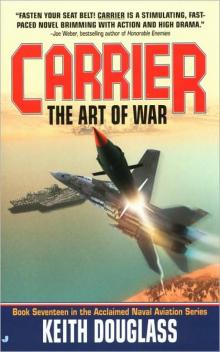 The Art of War c-17
The Art of War c-17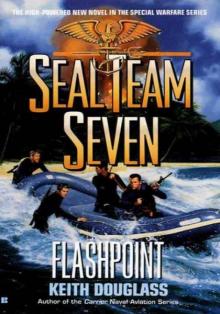 Flashpoint sts-11
Flashpoint sts-11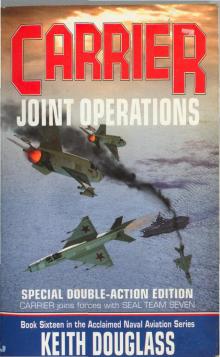 Carrier - Joint Operation Book 16
Carrier - Joint Operation Book 16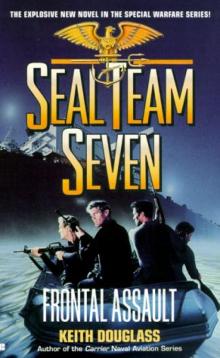 Frontal Assault sts-10
Frontal Assault sts-10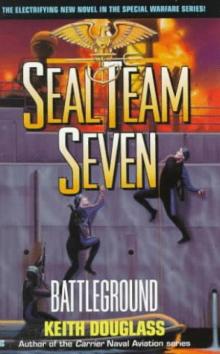 Battleground sts-6
Battleground sts-6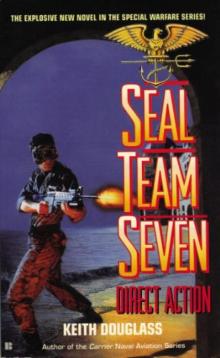 Direct Action sts-4
Direct Action sts-4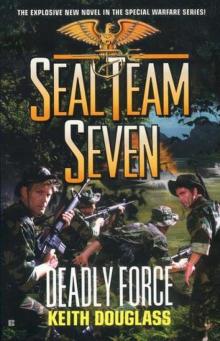 Deadly Force sts-18
Deadly Force sts-18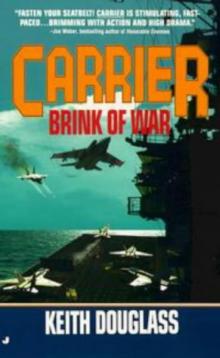 Carrier 13 - Brink of War
Carrier 13 - Brink of War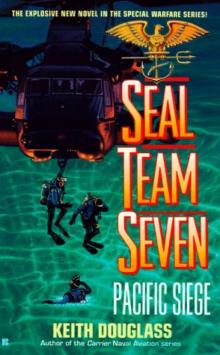 Pacific Siege sts-8
Pacific Siege sts-8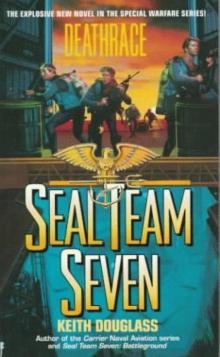 Deathrace sts-7
Deathrace sts-7